The UX Reader: A Book About MailChimp UX Team Work [Part 1]
- Transfer
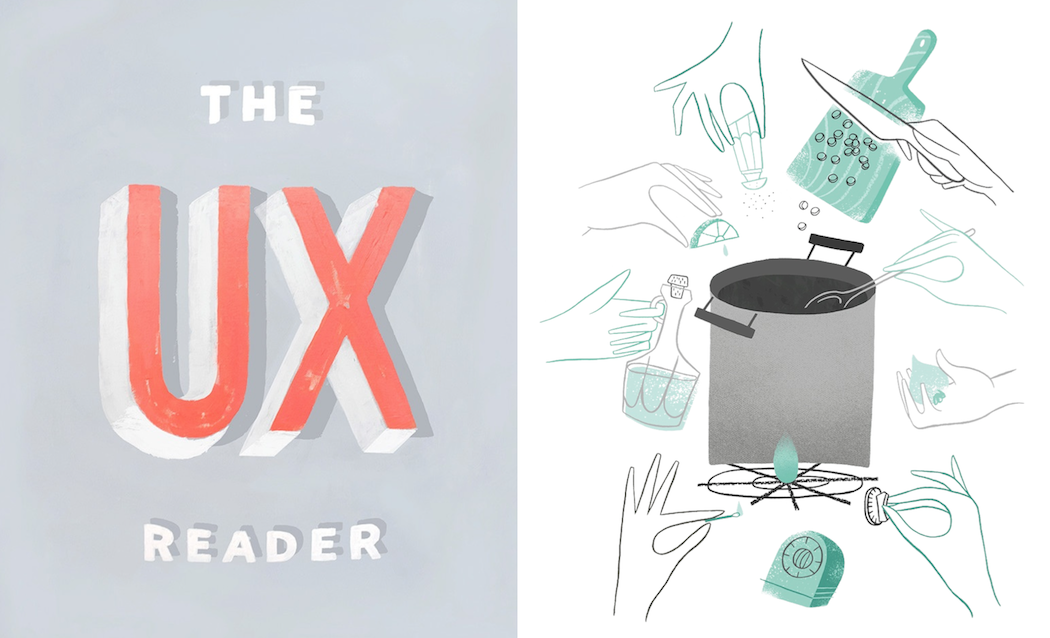
[ TL; DR ]
[ 2nd part of the book ]
[ 3rd part of the book ]
[ 4th part of the book ]
[ 5th part of the book ]
[ 6th part of the book ]
[ 7th part of the book ]
[ 8- I am part of the book ]
Introduction
MailChimp team loves to share the results of their work, which subsequently gives an amazing effect. This helps us to be more attentive to what we are doing: “Let's see how we succeeded? And why did we decide that this is the best method? ”
We highlight effective approaches to solving various problems: “We saved a lot of time by solving it this way.” The publication of such approaches gives rise to an interesting discussion: “So you did it this way?” I wonder why? ”
This helps us not to be conceited: “Yes, you are right. We could have implemented it differently. ” Modesty and openness to new ideas is a source for our professional growth: “Well, we were guided by this method, but decided to review it and conduct an experiment. As a result, we have come to the conclusion that there are more effective approaches. ”
We share the results of our work in order to achieve the best results in our activities. This is the essence of our book. We hope that it will help you in a similar way. But there is another reason that we decided to release this book: it allows us to study many issues through the eyes of our customers.
We will direct all the money earned on this book to RailsBridge, which spends a lot of effort on teaching programming the groups of people who historically constitute a minority in the total mass of developers. The format of this book is in line with our understanding of user experience. We start by considering the aspects of collaboration and teamwork, followed by our UX-three: research, design and development. In the final articles, we decided to consider the issue of improvements and improvements that can be dealt with endlessly, of course.
During the reading process you may have questions and comments - they can be safely sent to us. We share with you the results of work that we love and value very much, and if this helps you to improve your work even a little, it will be the best reward for us.
Aaron Walter, Director of UX at MailChimp
UX team building
"User experience" is a rather vague term in its essence. It can be used as a kind of container, including research, design, development and even technical support. Based on this uncertainty, the question arises of forming an effective team.
In 2008, the MailChimp UX team consisted of one person - me, and I had to do everything: interface design, front-end development, prototyping, client interviewing and usability tests. The combination of these disciplines in my work allowed me to understand which UX team I would like to form.
This team should be able to think and implement their ideas. In large companies, UX teams are often focused on working with wireframes (prototypes) and processes (workflows), while they lack the competencies to work directly with interfaces. The weak point of this approach is the loss of some ideas and meanings when transferring the results of the activities of one department to another. A team of specialists who do not have interdisciplinary experience generates an inconsistency of work, which ultimately leads to delayed iterations, leads to an increase in entropy and, ultimately, to mediocre user experience.
I wanted the opposite - to form a team of people with interdisciplinary experience and special competencies, which would allow us to work out individual details, keeping in mind the general idea of user experience. Over 6 years of work, we slowly and methodically worked on the formation of such a team. I brought to our team a designer, developer, usability testing specialist and so on. And these are not just diverse specialists, they are those who make their creative contribution to the project, inspire us and progress along with the team.
We deliberately work as part of a small team of 12 people: four are engaged in design research, two are engaged in interface design, another four are engaged in front-end development, there is another person involved in the layout and design of mailing lists, and I am. The small number of employees facilitates communication within the team, not to mention the understanding that you work with smart and capable people.
Thinking about how we arrived at the current version of our team, I draw a number of conclusions about how to select employees in order to get a strong UX team. These are not some kind of magical advice, but simply an analysis of how we manage to do quite a lot using intuition and experience.
Hiring a person is easy, but firing is difficult
Finding the right candidate for the job is not an easy task. It requires an incredible amount of time. Tasks of this kind often seem impossible, but are key in the process of forming a UX team (or any other team). It is not difficult to find ordinary specialists, but dismissing them is much more difficult.
Such people usually do not demonstrate any significant merit as performers or organizers, but they are kept at a sufficient minimum level, which allows them to justify their presence in a particular position. The spirit of mediocre attitude to work is a serious thing, it may well scare away talented candidates for employment. The key to working on this aspect of the team is attentive to the process of hiring new employees.
Do not try to evaluate a person strictly by his skills - pay attention to such qualities as determination, curiosity, disinterestedness, openness, confidence, sociability, the ability to control your emotions and internal motivation. You cannot teach all this, but skills are a matter of time.
In addition to this, think about the general impression that a person makes. Of course, at first glance this approach seems too general, but let me give you an example from my practice:
Based on the overly strong handshake and loud greeting of one of the candidates, I realized that for my team a person with such a powerful character would not be suitable. During the interview, I became more and more convinced of the correctness of my hunch. I realized that such an assertive person would simply crush the atmosphere in the team.
We spend more time at work with our colleagues than at home with our family, so why do not we listen to our instincts when deciding on a job?
In the process of selecting employees, you can go to extremes in your quest to find the best of the best. Unfortunately, these guys quite often experience difficulties in interacting with the team and can, without any malicious intent, exert psychological pressure on their colleagues. When hiring a new employee, ask yourself: “Can this person say“ we ”instead of“ me ”? Won't he “pull the blanket” over himself? Does this person have the will to delegate the continuation of work on their best projects to anyone else? ”If the answers to all these questions are positive, then you have a really good employee in your hands.
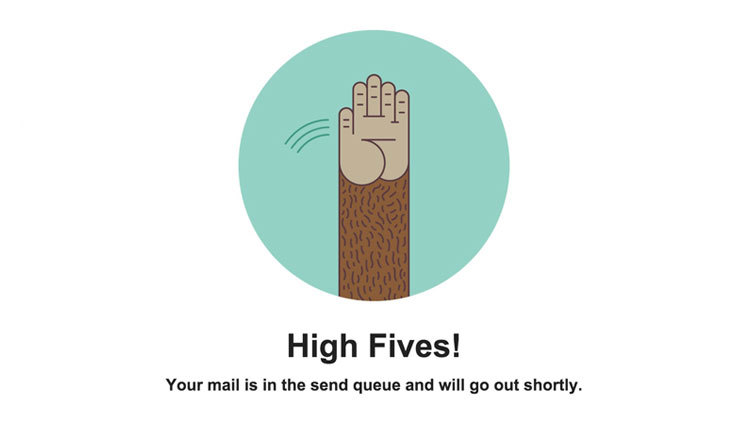
Respectful attitude
Lack of proper attitude to the results of work can great demoralize your colleagues. There are many studies on this subject, but few take them seriously. The work of designers verified with accuracy to a pixel, brilliant program code of developers - all this is very often lost in a hurry. As a result, many simply leave.
This applies to both individual employees and teams, and ultimately to their companies. What is the reason? The answer is simple: lack of respect for each other.
Respect is based on the time that we devote to understanding each other and understanding the expertise of our colleagues. A specialist who is a master in his field of activity cannot be considered effective if he does not understand the connection between the results of his work and the work of his colleagues. A good designer should understand the specifics of the engineer’s work in order to properly respond to his requests, listen to him and understand those who embody the work of the designer. A good developer will not focus solely on performance aspects and will take the extra time to develop a truly effective interface with the designer.
Respect makes it easier to exchange ideas and creates an atmosphere of trust. You can achieve much more by starting your phrase with "Yes, and it would be possible ..." than with the word "no."
Mutual respect in the work of the designer and developer is a key ingredient for obtaining a good product, but it rarely appears on its own if it is not perceived as one of the fundamental values of the company. In this case, employees should take an example from managers.
Autonomy
Respectful attitude is not the only element of an adequate working atmosphere. The lack of autonomy in the adoption of certain decisions can demoralize the team no less than the lack of proper attitude to the results of work. It is difficult enough to experiment if you need to take written permission every time, and this, in turn, does not allow you to demonstrate significant progress in your work. If your company does not allow any unsuccessful decisions, then you can not wait for something outstanding.
Teams need autonomy for quick decisions based on their instincts and leading to something new: experience, information, etc. Autonomy allows you to achieve better results in a short time and without frills in available resources. Having hired an excellent specialist, you must show him the vision of your work, its principles and just not interfere. This requires a certain level of trust in each other.
There are not many employees in the MailChimp team, but this is our advantage. It’s easier for us to interact, plan and embody ideas. Each team has a certain level of autonomy regarding its work. If necessary, such teams interact with each other and develop joint solutions.
Nevertheless, in this matter it is necessary to feel the measure: absolute autonomy leads to chaos.
Working within the framework of small autonomous teams, we do not forget about our belonging to a large team of the company. Our decisions affect the work and processes of other parts of MailChimp. Making significant decisions requires a trade-off between your autonomy and your views on the business of the entire company.
Many often demonize meetings, but they are useful if they are short regular discussions of the work done. Each of the employees belonging to a particular autonomous team should be aware of what his colleagues are doing. A brief overview of current activities allows employees to help each other and keep abreast of what is happening. Even a simple chat over a cup of coffee helps to synchronize work. This is exactly what happens with us at MailChimp.
Parallel development and research cycles
Flexible development methodologies ( Lean and Agile ) are a kind of religion of technology companies trying to get ahead of their competitors through fast iterations in product development. This approach also has weaknesses, for example, insufficient research work on solutions. Thus, a bet on speed does not always lead to the implementation of those decisions that could really be considered effective.
The MailChimp team adheres to these methodologies, but does so without fanaticism. “Quick implementation and error correction” is the motto that briefly describes our approach.
At a certain point, we tried to link the research process to the 5-week update release cycle, which our developers and interface designers follow. We managed to do this, and this approach works for usability testing, conducted in order to find opportunities for insignificant improvement in the results of work, but at the same time we also encountered significant time limitations for detailed studies of problems and developments.
Design researchers are working on a long study of the key aspects of our services, and this work requires interviewing a large number of our clients, conducting surveys, ethnographic studies, etc. All this takes time. The detailed study cycle is much longer than the 5-week development cycle, and we conduct them in parallel to each other.
The theory loses its meaning without confirmation in practice, and the parallel operation of these cycles should not lead to the complete autonomy of working groups. Our researchers constantly exchange the results of their research with designers and developers, and not just wait for months in order to share their best practices. At the same time, researchers do not expect the immediate implementation of their recommendations - they form the context in which work is ongoing on the product.
As large-scale studies are completed, we are discussing steps to incorporate the proposed recommendations into our overall plan. This approach is not only a bet on the speed of work, but also on the guaranteed effectiveness of the proposed solutions.
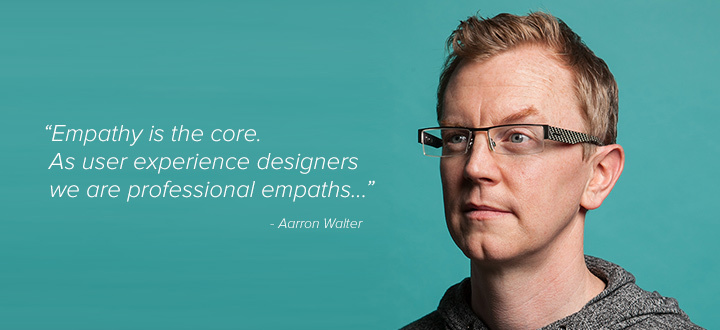
Empathy culture
The development of updates is a “dustless” occupation, which cannot be said about the work to improve processes and correct errors. A good product requires both one and the other, performed with an equal degree of dedication and enthusiasm.
Motivation is needed to work to improve something. The best motivation for the UX team is those difficulties in working with the application that users face. From time to time, we invite our customers to the MailChimp office and invite them to participate in the usability testing of our products. The guys from the technical support department and our UX team are always very worried, watching over the conduct of such testing. Especially in those moments when users are faced with difficulties in performing a particular task. As a result, it just becomes so uncomfortable for our customers that we take up with vengeance the work to improve our products.
In addition, we conduct remote usability testing and surveys, answer questions on Twitter and analyze thousands of reviews from our customers, including those who refused to further use MailChimp products. Our research group is engaged in this work, but the matter is not complete without the participation of front-end developers. They communicate with customers face to face and learn about their approaches to using our products.
As soon as you begin to pay attention to the user experience of your customers, the level of empathy within your team will increase. Your colleagues will not only be motivated to improve products, but also will take up this work with double perseverance and dedication. Without any request.
Share stories
Introducing design research into the workflow of our UX team, I was sure that there would be enough recommendations based on the results of such research. I made a mistake, because there is no sense in dry reports without a convincing presentation of the results.
Our experts are not too lazy to compose 50-page materials on how our customers use MailChimp products. Such materials really help us improve our products, and sometimes they force us to review the activities of the company as a whole.
Few people are interested in dozens of pages of reports that require considerable time to study. Based on this, we decided to work with the user experience of our colleagues, who, on duty, need to delve into the essence of such materials.
We experiment by formulating the high-level results of our research in the format of posters, videos and web pages, which greatly speeds up the process of studying them and facilitates collaboration with such documentation. Research results are much more beneficial if they are easy to read and share with colleagues.
Keep improving
I have been working as part of the UX team, managing and recruiting employees for many years, but I still could not figure out all aspects of our business. It seems that a universal solution constantly eludes us, the search for which many of my colleagues are busy with. Maybe there is no such solution at all. An exact definition of the term “user experience” has not yet been formulated, so why should there be a universal approach to working on creating and managing a UX team?
We try to harmonize the work of researchers, designers and developers, and I know for sure that smart and qualified specialists, united by a common goal of helping our clients, manage to create amazing things.

Teamwork
A couple of months ago I was in Stanford, where I was fortunate enough to give a lecture to students of Enrique Allen. They worked on prototypes, built a collection of user reviews and an iterative workflow. This course was full of startup spirit.
The audience is located on chairs and sofas, evenly distributed throughout the hall. Subsequently, the seats were replaced by tables, at which the discussion of the work of students continued. I was struck by the dynamics in the use of the workspace, which was changing depending on their activities.
As the lecture ended, one of the teachers, Scott Dorley, handed me a copy of his book Make Space, which just tells about various approaches to the organization of the workspace. Scott also worked with this room, introducing new teaching methods using certain options for working furniture layouts.
During a short tour of the campus, Scott showed me various spaces for working with ideas, productive activities, and calm thinking. They were full of various artifacts designed to promote creative thinking, embedded in the educational process at the basic level of the program and at the campus premises themselves.
Visiting Stanford changed the way I imagined the workrooms. And relatively on time. At this time, Ron Lewis, our creative director, and Mark DiCristina, marketing director, just designed for us a new design studio in Atlanta.
Design Studio MailChimp
Ron was already busy with researching possible solutions, visiting the offices of various companies in order to prepare groundwork for his own project, but we managed to agree with Mark on the basic principles that influenced the design of our studio. And the resulting workspace, in turn, influenced how our team works.
Experiment with the location of jobs
Based on the fact that the organization of joint work of our team was a priority in the framework of creating a new studio, we started with the location of jobs. Design researchers, specialists in working with content and illustrations, designers, photographers and designers of interaction methods - for each, it is necessary to choose a suitable place taking into account qualifications and character.
For our studio, we selected a large open office (open-space) on the fourth floor of the building. We did not begin to separate working groups from each other and decided to unite colleagues with the most diverse specializations. We put analysts next to design researchers, front-end development specialists next to marketers, and designers next to content experts.
This approach allows us to look at working projects from different points of view. Regardless of what each of us does individually.
Design for motion
Many hours of sitting at the workplace leads not only to muscle atrophy, but also greatly undermines mental activity. We seized on this idea and arranged the furniture in such a way as to facilitate the easy movement of colleagues from one part of the room to another. At the same time, we used desks for standing work and took into account the possibility of changing the workplace.
We also have a special place for designers who want to work productively, coming to Atlanta as guests. James Victor , Dan Benjamin , Brad Frost and many other experts in their field have already managed to work with us . Such people stop by for a couple of hours, but their vigor and energy inspire us greatly.

Create space for working with ideas
Ron managed to visit the Iron Yard Greenville office , the walls of which also served as a huge board. We liked this idea, and we brought it to life in our studio. As a result, we noticed that people are more willing to share their ideas, having the necessary tools in order to convey them to others. So collaboration has become even more enjoyable and productive.
In our studio, we combined the approach of colleagues from Iron Yard and Stanford, constructing mobile racks that are used as space delimiters and fasteners for writing boards. Thus, we can quickly organize a space for working with ideas and return to our workplaces, analyzing it as soon as the time comes for the implementation of our ideas.
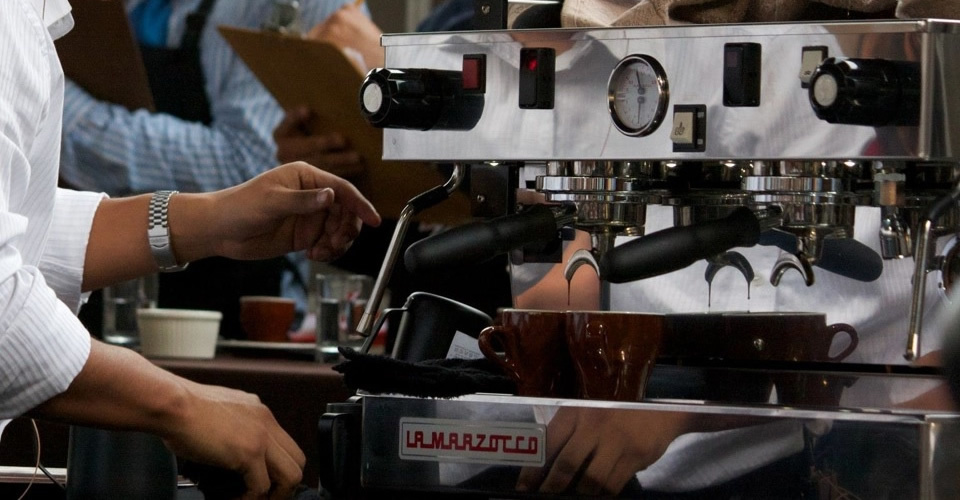
Leave room for convergence
We also have a common place for lunch and socializing. The heart of this place is the coffee bar with the LaMarzocco Linea machine . Good coffee attracts not only designers, but also guys from other divisions of the company. Here we meet engineers, accountants, technical support colleagues exchanging the latest news.
Convergence brings people together, as Gregg Bernstein , a senior design researcher, wrote in an article in UX Mag. Our design solutions have led to a closer collaboration. Thus, relatively expensive purchases like a coffee machine paid for themselves.
Allow space for thought.
Large open offices can sometimes be very distracting with lots of talk, albeit inspirational. Based on this, we equipped a couple of offices located next to our design studio for meetings, calls or just work in silence.
Of course, we wanted to unite the whole team within one space, but first of all we thought about the productive work of our colleagues and gave them the opportunity to choose.
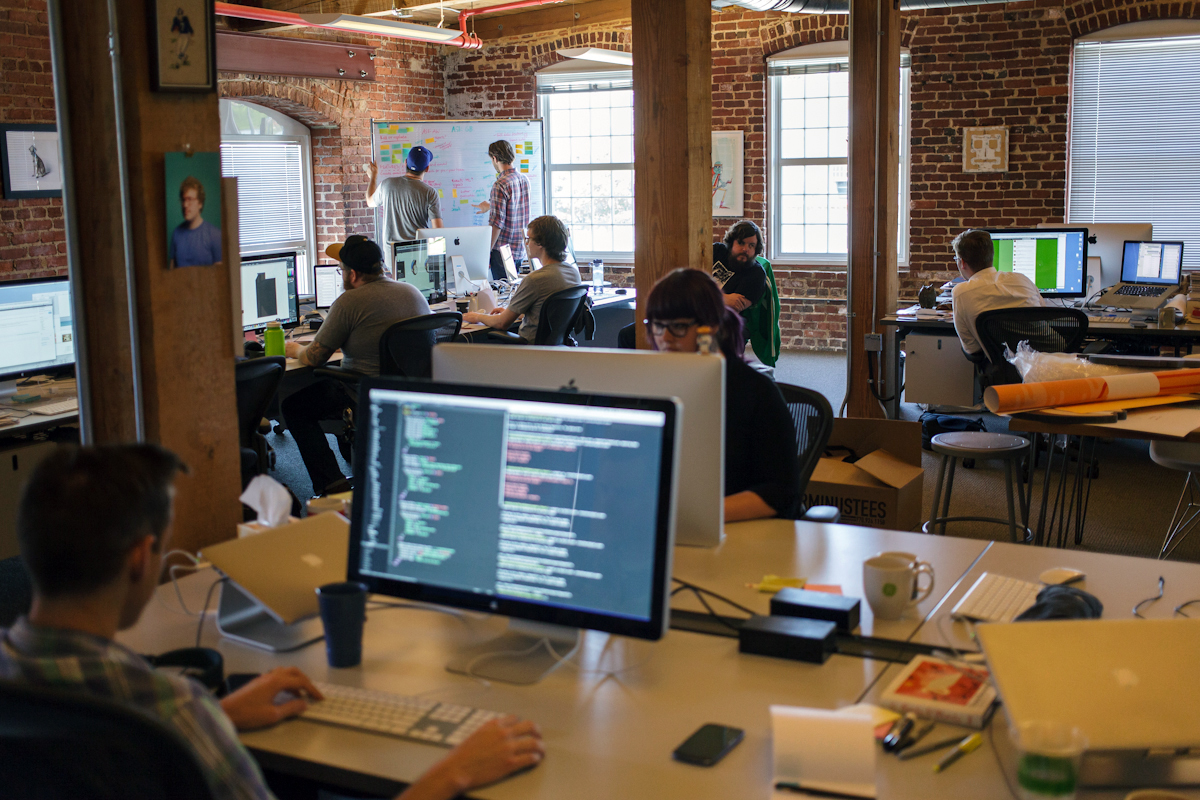
Spaces for the synthesis of knowledge
Without exaggeration, we can say that the new design studio has changed the way we work. Previously, we worked in rooms that were delimited by walls, as a result of a joint discussion of working issues was a rare occurrence.
Now we cannot imagine a day without interdisciplinary communication. Content specialists communicate with designers, photographers - with design researchers. We always knew that a good product requires a synthesis of skills and knowledge, but now we are convinced of this every day.
[ Translation of the second part of The UX Reader ]
